10 Films That Prove Matriarchy is Alive and Well in the Horror Genre

Strong female characters fill the horror genre. Some of our earliest folklore features not only the monsters that terrify us, but the women who fight back. In fact, it’s in the stories about things that go bump in the night that we often find mirrors of the real-world horrors women experience on a daily basis. Life within a patriarchal culture can be scary. Horror, in particular, excels at giving us a face to attach to an often unnamable monster. With so many strong female and femme characters, it’s only natural that the genre would contain many examples of matriarchy.
Though always present, recent years have seen more and more films in which women lean on each other for support in times of terror. Systems of organization based on female leadership are becoming the norm rather than the exception. In other words, matriarchy is beginning to rise within the genre. The following is a list of notable horror films that feature strong female and femme characters who work together to fight back against their monsters.
Poltergeist (1982)
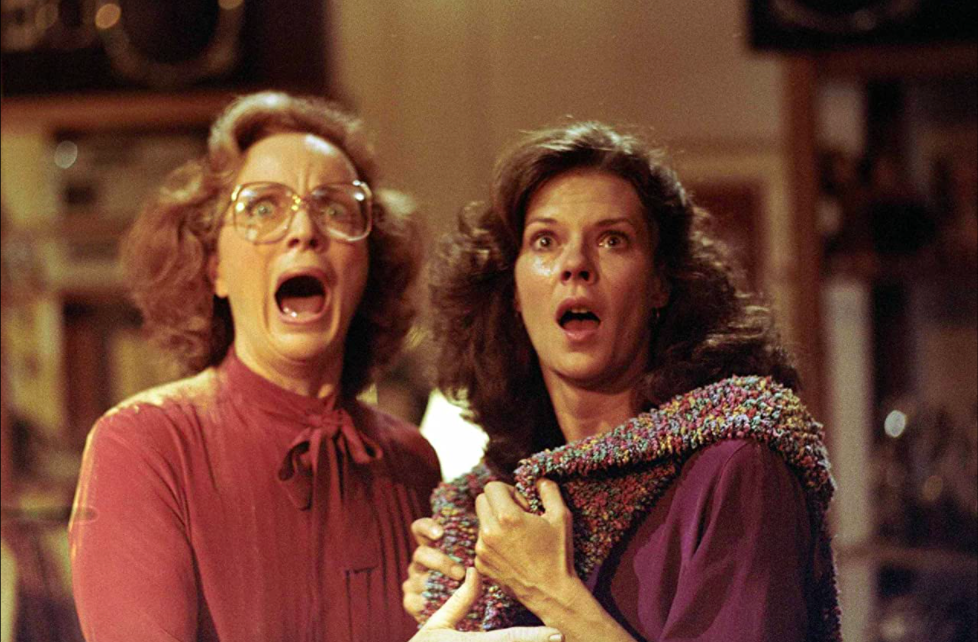
Premiering in the early days of the Reagan Administration, Poltergeist is brimming with subversive feminine power. Steve (Craig T. Nelson) and Diane (JoBeth Williams) Freeling are living the American dream. They are an attractive young couple with three healthy children, a beautiful home, and a delightfully mischievous dog. They’re even building a pool in the backyard. But Tobe Hooper’s nightmare about chaotic paranormal phenomena reveals the dark truth within the apple pie wholesomeness. When youngest daughter Carol Anne (Heather O’Rourke) is pulled into another dimension by the Beast who haunts the house, the Freelings are confronted with the corruption literally lurking beneath the foundations of their domestic bliss.
Poltergeist contains three varied examples of strong female leadership. Dr. Lesh (Beatrice Straight) leads a team of paranormal investigators who shed light on the infestation. Tangina (Zelda Rubinstein) is the soft-spoken but powerful medium that provides the key to rescuing Carol Anne. And Diane is the brave mother who enters the otherworldly portal to save her daughter. All three women work together to achieve a common goal, while the men mostly just squabble and cause more problems. Combined with the legendary dispute about whether Hooper or screenwriter Steven Spielberg actually directed the film, all evidence supports the fact that Poltergeist belongs to its women.
Dolores Claiborne (1995)
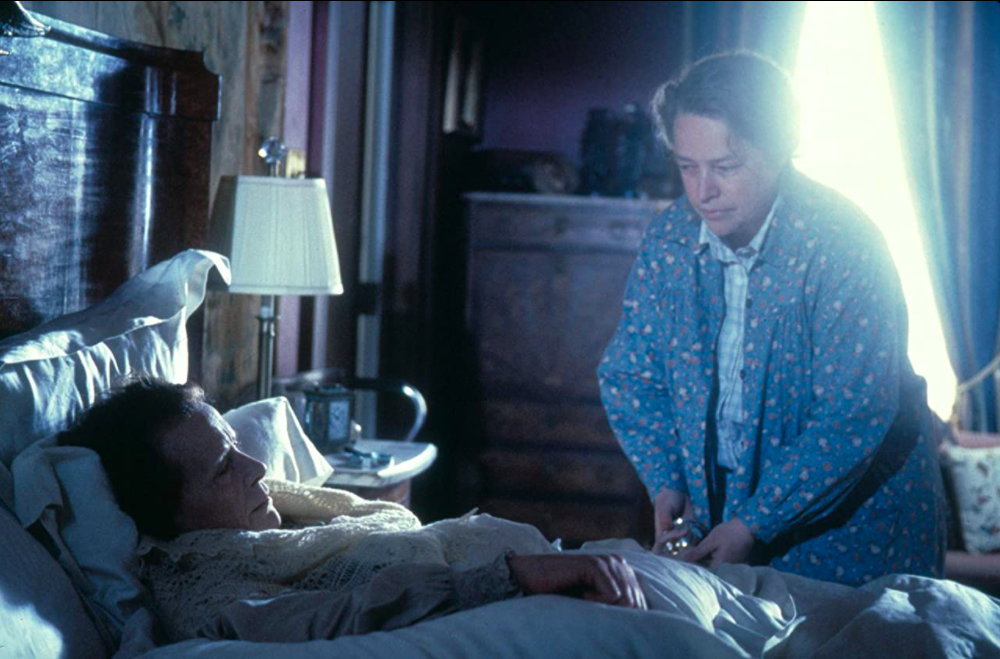
Adapted from Stephen King’s 1992 novel, Taylor Hackford’s harrowing film about a hardworking mother is a powerful story of love and sacrifice. Dolores (Kathy Bates) lives on the tiny Little Tall Island in rural Maine with her drunk husband Joe (David Strathairn). She works herself to the bone to support their three children only to watch him constantly drink away her savings. When Dolores discovers that Joe has been sexually abusing their teenage daughter Selena (Ellen Muth), Dolores turns to her wealthy employer Vera (Judy Parfitt) for help. Drawing on personal experience, the hardened widow advises Dolores that “sometimes, an accident can be an unhappy woman’s best friend.”
Though perhaps best known for his monsters, King often writes about strong women, most notably in a collection of novels published in the 90s. Dolores Claiborne is a shining example of King’s exploration of women overcoming the oppressive and often abusive men in their lives, finding strength in reckoning with their past trauma, and leaning on each other in the process. Dolores is the backbone of her family, willing to sacrifice everything to give her children a good life. Though often contentious, her decades-long friendship with Vera (and the story’s matriarchy) is built on a solid foundation of begrudging, but honest love and respect.
28 Days Later (2002)
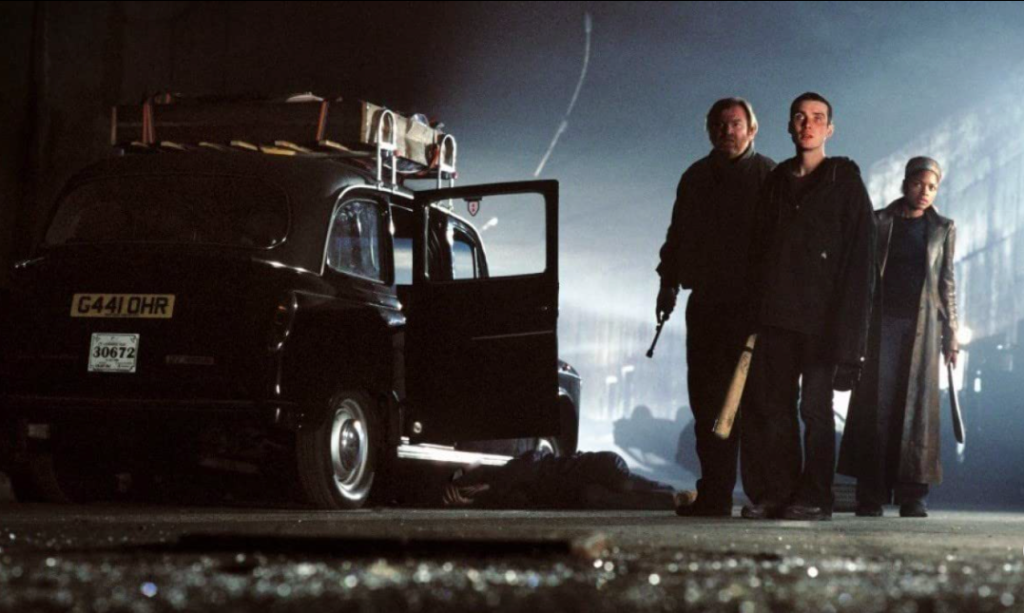
Danny Boyle’s game-changing zombie/contagion film follows Jim (Cillian Murphy), a bike messenger who wakes up from a coma to a world that has collapsed around him. Devastated by the new Rage virus, London has fallen to the ravenous hordes of the infected, men and women whose humanity has been erased by a viral bloodlust. Jim finds temporary safety with Selena (Naomie Harris), another survivor whose killer instincts serve as protection against the rapidly transforming monsters around them. Along with fellow survivors Frank (Brendan Gleeson) and his teenage daughter Hannah (Megan Burns), they form a new family of sorts and attempt to escape the deserted city. However, the grass is not always greener. They soon fall into the clutches of a group that may be even worse than the zombies they’re running from.
28 Days Later may seem like an odd choice for a collection of matriarchal stories, but the film not only features multi-generational female leadership, but also provides a grim example of patriarchy run amok. Selena is ostensibly the leader of the tiny band of survivors. Her brutal decision-making and emotional boundaries seem harsh at first, but they are arguably what has allowed her and those she protects to survive when so many others have fallen. As she and Jim grow closer, Selena begins to soften, allowing herself to make emotional connections that will benefit her long-term survival.
But it’s in the group of soldiers who “rescue” them that we can clearly see the need for matriarchal leadership. When the boundaries of civilization are removed, they prove to be the bigger threat, treating women as objects for their service and amusement. It’s the essence of patriarchy with the varnish removed; an ugly look at man’s dark desires.
The Descent (2005)
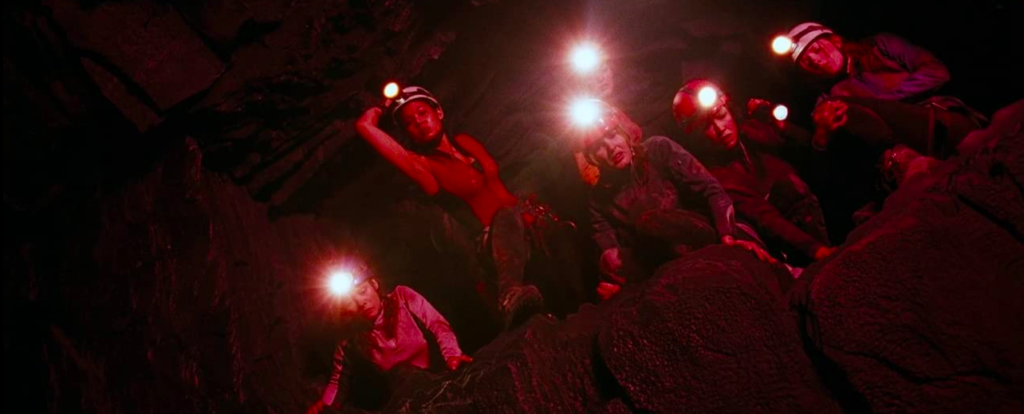
Niel Marshall’s cave horror film boasts one of the most impressive female casts in genre history. Both terrifying and empowering, the story follows Sarah (Shauna Macdonald) and her five friends as they descend into an uncharted cave system on a spelunking excursion. Still reeling from the loss of her daughter and husband, Sarah hopes to reconnect with her friends and her adventurous spirit. Kindhearted Beth (Alex Reid) is Sarah’s main source of emotional support and prioritizes her friend’s recovery over her own safety. Headstrong Juno (Natalie Mendoza) is the leader whose ambition is perhaps too big for her judgment. Pushed to their limits, the group begins to fracture as they encounter a hive of cannibalistic humanoid monsters lurking within the cavernous depths.
Though written and directed by a man, The Descent is a prime example of nuanced female leadership and teamwork forming a complex matriarchy. The women form subsets within the group, depending on each other to overcome the terrifying nightmare they stumble into. In a particularly moving scene, Beth coaches Sarah through a panic attack when she finds herself stuck in a particularly narrow tunnel. But the women are not perfect. They often disagree and Sarah and Juno find themselves fighting over the affections of the same man. But The Descent is perhaps most inspiring because it shows women bravely attempting to overcome insurmountable odds while still falling victim to the flaws that make them relatable.
Suspiria (2018)

The most formal example of matriarchy on this list is Luca Guadagnino’s remake of the classic Italian horror film, Suspiria. Set in 1977 Germany, ballerina Susie Bannion (Dakota Johnson) travels to the formidable Markos Dance Company hoping to study at the feet of the revered Madame Blanc (Tilda Swinton). Taking the place of a missing dancer, Susie finds instant success and lands a coveted solo in the upcoming performance. As more dancers disappear or fall ill, she and fellow ballerina Sara (Mia Goth) begin to suspect a more sinister intent to the ballet’s design and that the school itself may be a front for a coven of witches.
Both versions of Dario Argento’s original story depict examples of cinematic matriarchy, but Guadagnino’s coven is more nuanced. The long tradition of witches is led by three ancient matriarchs: Mother Lachrymarum, Mother Tenebrarum, and Mother Suspiriorum. At a crossroads in their leadership, each witch of the company’s coven must decide where their loyalties lie; with Madam Blanc, or with the disease-riddled Mother Markos who seeks a new body through which to attain eternal life. The film’s stunning conclusion displays both the best and worst that female leadership has to offer. It proves that not all matriarchies are dedicated to supporting womankind.
Assassination Nation (2018)
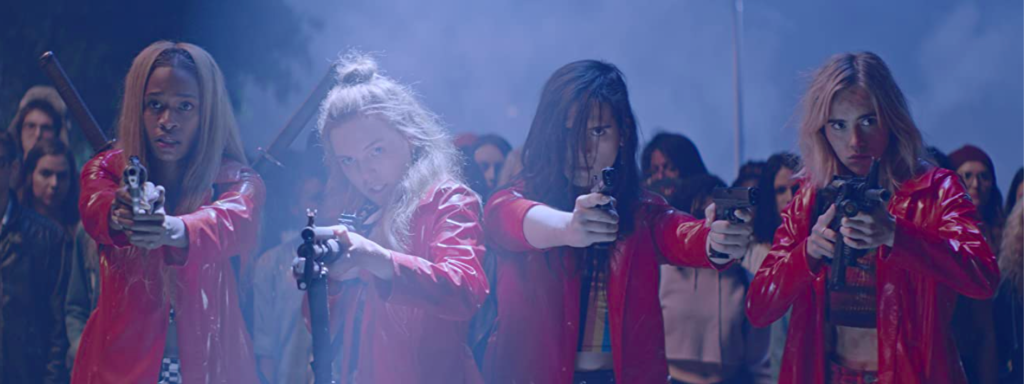
This 2018 trigger warning spectacular wears its female leadership on its sleeve. A variation of the Salem Witch Trials, Sam Levinson’s story follows four teenage girls, Lily (Odessa Young), Bex (Hari Nef), Em (Abra), and Sarah (Suki Waterhouse) as they navigate the complex demands placed on them as young women in a patriarchal world. When an anonymous hacker releases the personal information of half the town’s citizens, Lily’s affair with a married man is revealed. As secret scandals and embarrassing search histories come to light, the self-righteous town begins to tear itself apart. Seeing a convenient scapegoat, they turn on Lily and her friends, hunting them down in the streets and demanding they pay for daring to exist.
The film is a blunt condemnation of the puritanical hypocrisy that governs most of America. The girls receive validation based on the explicit desires of the men who dominate their lives. They’re expected to be tempting seductresses while simultaneously embodying the helpless damsels whose need for protection will feed male egos. But none of it is real. It’s all a game the girls play to survive in a world built to use them. In the film’s final moments, Lily records a rage-filled speech directed at girls tired of being told what to do, how to look, who to be and then shamed for it. A counter mob of young women floods the streets, sick of taking the blame for a nation that can’t live up to its own moral expectations. A new matriarchy rises.
Terminator: Dark Fate (2019)
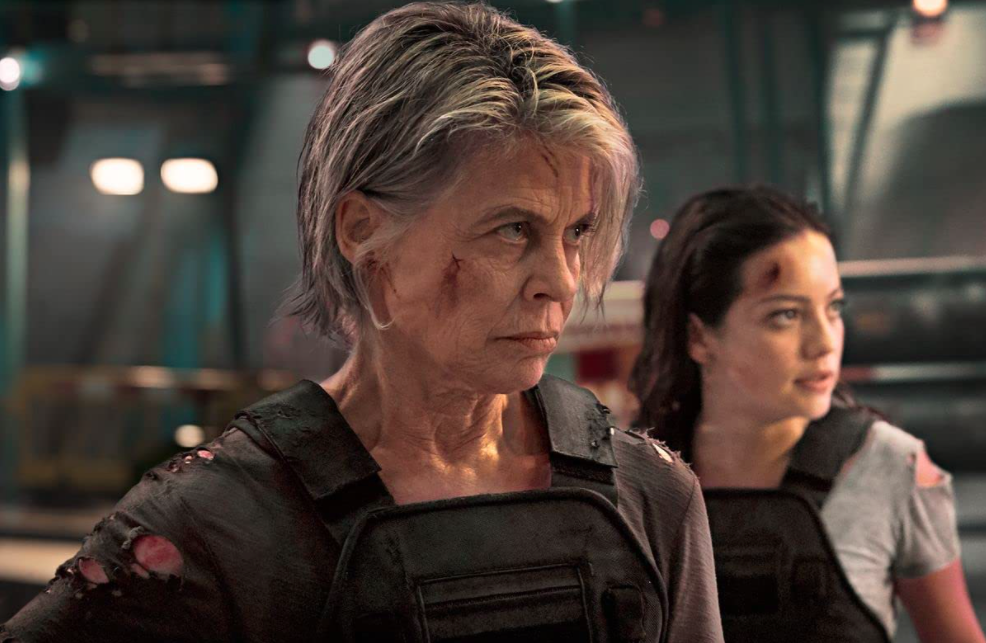
The Terminator franchise contains one of the strongest female characters in cinematic history. Sarah Connor, played by the immaculate Linda Hamilton, is an unassuming waitress when first targeted by the T-800 (Arnold Schwarzenegger). An unstoppable machine with a single-minded purpose, he exists only to kill her before she can give birth to the future leader of the resistance, John Connor. While Sarah goes through several transformations throughout the uneven franchise, she is an example of empowerment, motherhood, and sacrifice. She is a nuanced portrayal of strong femininity with a tender emotional core.
But as much as it pains me to write it, the entire premise of her story rests on the idea that she is valuable because of the child she will give birth to. Sarah is targeted not due to any actions on her part, but because of the existence of a man. While she rises to the challenge over and over again and is arguably responsible for the strong leader John will become, her story has a dark undercurrent of misogyny.
Though it is a deeply flawed film, Dark Fate removes John from the narrative in a heartbreaking early twist. Sarah continues to fight the machines hoping for vengeance and along the way meets Dani (Natalia Reyes), another young woman in need of protection and Grace (Mackenzie Davis) the partially human terminator responsible for her care. Sarah assumes that Dani will give birth to another male leader. But in a perhap obvious twist, Dani turns out to be the great leader worthy of protecting. With men no longer part of the equation, Sarah, Dani, and Grace find that they are capable of leading on their own, valuable in their own right and not due to the children they will one day produce.
Hellbender (2021)
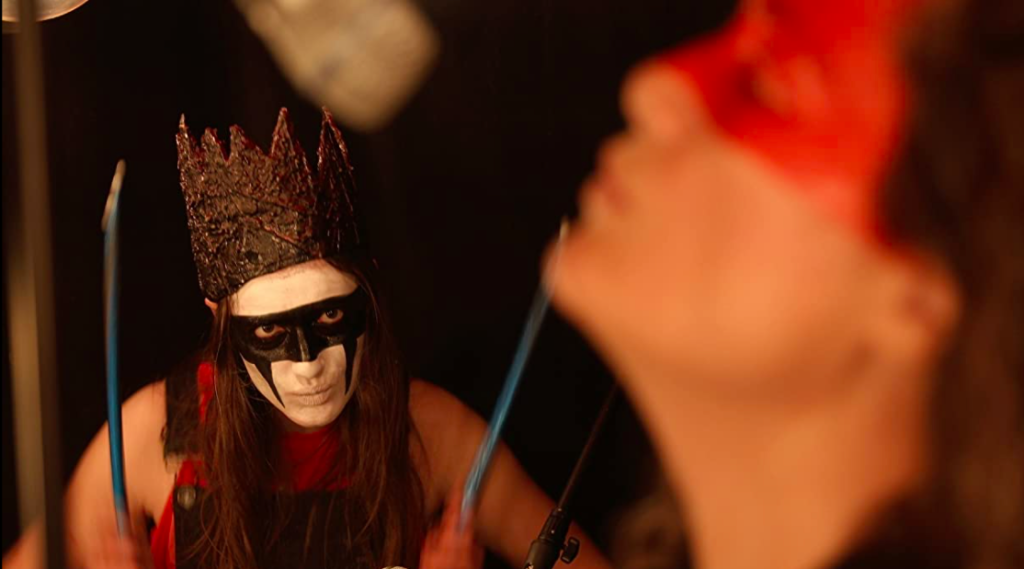
One of the newest examples of matriarchy in film is a story of generational power. Teenage Izzy (Zelda Adams) and her Mother (Toby Poser) live in a remote mountain home where they spend their days hiking, swimming, and writing songs for their two-person punk band. Mother has kept Izzy isolated from the world since the age of five with the lie that she is sick and contact with the outside world could be dangerous. But Izzy longs for companions her own age and sneaks into town. While interacting with her new friends, Izzy discovers magical abilities living dormant within her. Her mother finally tells her that she is a Hellbender, one of a matriarchal line of witches who fuel their magic by eating other organisms. As Izzy explores her newfound powers, she challenges the moral code by which her Mother lives.
Hellbender is an example of a quasi-matriarchy both in front of and behind the camera. Izzy and her mother are a part of a female-led power system capable of controlling the elements. Mother passes on her occult knowledge to the younger generation, even though she fears the dark temptation of her daughter’s burgeoning power. But the creation of Hellbender was also a family affair. Husband and wife filmmaking team John Adams and Toby Poser along with their daughter Zelda wrote and directed the film. Their other daughter Lulu Adams also appears in the film. The Adams family is a multi-generational creative team and proof that men can be part of a powerful matriarchy, too.
Slumber Party Massacre (2021)
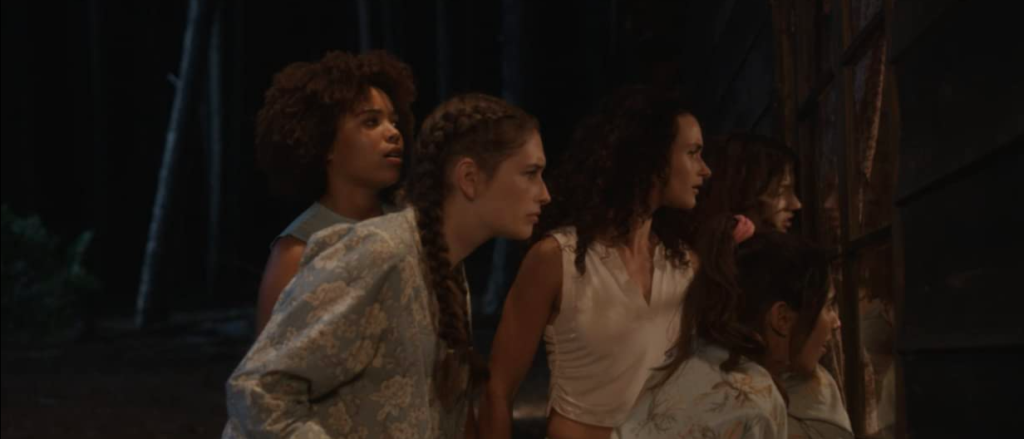
Danishka Esterhazy’s remake of the 1982 slasher classic manages to turn the feminist satire up to 11. This hilarious but horrifying and often poignant film follows Dana (Hannah Gonera) and her friends as they travel to a remote cabin for a girl’s weekend. Her mother Trish (Schelaine Bennett), the sole survivor of a slumber party massacre when she was a teenager, is nervous to send her daughter out into the world unprotected. Trish and her friends were attacked by the notoriously phallic Driller Killer (Rob van Vuuren). He assaults his female victims with an industrial drill as punishment for the crime of being pretty. But Trish need not worry. Dana and her friends are actually going to finish off the Driller Killer once and for all by luring him out with a show of feminine helplessness.
Though its 80s inspiration is often read as misogynistic, the original The Slumber Party Massacre expertly rides the line between satire and exploitation. Notable for being one of the first slashers with a team of surviving final girls, Amy Holden Jones’s original slasher could easily have made this list as well. But the remake has a fantastic example of generational guidance and a female villain who stands in contrast to the empowered girls. Unfortunately, not all women seek to liberate other women. Slumber Party Massacre provides a prime example of women who support the patriarchal order. Throw in a gratuitous male shower scene, and a few delightful himbos and you’ve got the makings of a feminist cult classic.
The Fear Street Trilogy (2021)
The matriarchy depicted in the Fear Street Trilogy spans not only decades, but centuries. The town of Shadyside is used to tragedy, always seeming to fall in the shadows of its more prosperous counterpart, Sunnyvale. Even worse, in every generation, a ghostly killer emerges further plunging the already unlucky town into more tragedy. The source of this misery is a curse placed on the town by Sarah Fier (Elizabeth Scopel), a witch put to death in 1666. As Deena (Kiana Madeira) and her friends try to save themselves from Sarah’s wrath, they trace her curse back through the generations and learn a startling secret about the true legacy of corruption within the town.
The Fear Street Trilogy may read as light-weight nostalgia at first glance, but it is brimming with female leadership and matriarchy. Strong women at key points in the town’s long history come together to finally upend a centuries-old patriarchal curse and the lie that allows it to continue. Sarah is one of many women vilified for daring to express her true nature, but her only curse is in refusing to let the truth of her story die with her.
With such a long timeline, the Fear Street Trilogy also reminds us of an important truth. The roots of the patriarchy run deep and many of us will live in its shadow for our entire lives. But we keep fighting because the alternative is to give up our claim on what little freedom we’ve gained along the way. We keep fighting for the women who came before us; for those who will not be with us to reach the end of gender-based oppression. It’s our job to keep telling the stories of strong women who refused to give in and the leaders we turn to for inspiration in our darkest hours.
This is by no means a comprehensive list. The beauty of cinematic matriarchy is that once you begin searching for examples, you start to see them everywhere. The horror genre is filled with strong women who support each other and lead the way, providing examples of female strength for future generations. But there is still a long way to go. Most stories still revolve around white, cishet, able-bodied protagonists and the horror genre is no exception. Our cinematic lenses can, should, and must expand to include diverse representation in all its forms. As the saying goes, there’s no rest for the wicked
Categorized:Editorials News

